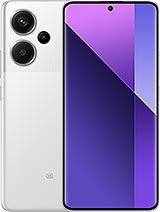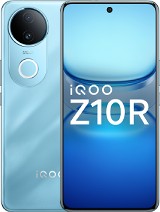Honor X9c alternatives
Tap above to see alternatives.
iQOO Z10R alternatives
Tap above to see alternatives.
4x2.2 GHz Cortex-A78
4x1.8 GHz Cortex-A55
4x2.6 GHz Cortex-A78
4x2.0 GHz Cortex-A55
8GB 256GB (UFS 2.2)
12GB 256GB (UFS 2.2)
f/1.8, (wide), 1/1.67", PDAF, OIS
5 MP
f/2.2, (ultrawide)
f/1.79, (wide), 1/1.95", 0.8µm, Sony IMX882, PDAF, OIS
2 MP
f/2.4, (depth)
1080p@30fps
1080p@30/60fps, gyro-EIS
f/2.5, (wide)
f/2.45, (wide), 1/3.1", 0.7µm
1080p@30/60fps
SIM1: Nano, SIM2: Nano
SIM1: Nano, SIM2: Nano
2 5G bands
n3, n40
8 5G bands
n1, n3, n5, n8, n28, n40, n77, n78
In this performance comparison, the iQOO Z10R with its MediaTek Dimensity 7400 (4nm) performs better than the Honor X9c with the Qualcomm Snapdragon 6 Gen 1 (4nm), thanks to superior chipset efficiency.
iQOO Z10R offers 2 years of OS updates, while Honor X9c does not have confirmed OS update information. iQOO Z10R receives 3 years of security updates, while Honor X9c does not have confirmed security update information.
Both Honor X9c and iQOO Z10R feature AMOLED displays, offering vibrant colors and deeper blacks. Both smartphones offer the same 120 Hz refresh rate. Honor X9c also boasts a brighter screen with 4000 nits of peak brightness, enhancing outdoor visibility. Notably, Honor X9c offers a higher screen resolution, resulting in sharper visuals and more detailed content.
Honor X9c comes with a larger 6600 mAh battery, which may offer longer usage on a single charge. Honor X9c also supports faster wired charging at 66W, compared to 44W on iQOO Z10R.
iQOO Z10R offers better protection against water and dust with an IP69 rating.
- Honor X9c – Check price here
- iQOO Z10R – Check price here
¹ Scores can vary even with the same chipset due to RAM, thermals, and software optimization.












